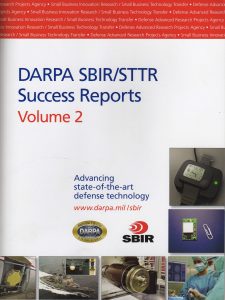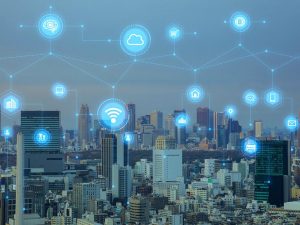Historically glucose levels have been monitored using disposable biosensors in tandem with disposable test strips (over 10 billion a year), whereby a drop of blood is placed on a sensor and an associated reader provides the number result. While the glucose test strip industry produces billions of single use sensors a year, cuts to medical budgets are driving profitability down every day. Current invasive methods of glucose monitoring result in very low patient compliance, therefore leading to poor glucose control and associated longer term health consequences and costs.
Recently, Bluetronix an Artificial Intelligence, Sensor, Data Acquisition & IoT (Internet of Things) based company was a winner of multiple contracts from the US Department of Defense from the likes of DARPA —Defense Advanced Research Projects Agency, US Army Communications – Electronics Command, NASA and the Air Force Research Labs, has spun-off an entity to develop a wearable device called “Angel” for 24 hour glucose monitoring for diabetics. Bluetronix, which is the holder of several US patents for AI based wireless communications, sensor designs and collective artificial intelligence, intends to apply its patented technologies in the development of the “Angel” devices.
The American Diabetes Association advises that in the US, nearly 30 million (1 in 8) people have diabetes and incur average medical expenditures of about $13,700 per Diabetes and leads a list of just 20 diseases and conditions that account for more than half of all spending on health care in the United States, according to a new comprehensive financial analysis.
IN 2016 DIABETES: A $176 BILLION COST TO THE US HEATHCARE INDUSTRY
The importance of blood glucose (blood sugar) monitoring is the main tool used to check diabetes control. The current mainstream blood glucose measurement process is to use a lancing device on the side of the fingertip to get a drop of blood, touch the test strip to the drop of blood, and wait for the result. Apart from being painful for the diabetic, there are health risks due to the invasive nature of the process as well as measurement compliance and recording issue and general resistance and daily monitoring.
Concept of Operation (CONOPS)
The technology uses a proprietary state of the art custom designed optical sensor utilizing an extremely strong and flexible material made of carbon atoms which is often used in wearable devices. For the noninvasive glucose monitoring an optical sensor has been designed and will be used to do the diabetes analysis. This custom designed sensor and unique software & algorithms will be employed due to the nature of the Glucose molecules to be monitored, which are large and are easily identified with a low level laser shot into the skin. The sensor will be designed for extended response in the light spectrum from 400-1700nm with specified quantum efficiency across this range. This design allows the sensor to respond to the fluorescence of the large sugar molecules that are in the visible range with verifications of sugars in the optical scanning process.
In essence, the optical laser is performed by the sensor like a camera and is sent through the skin like a penetrable light that sees the blood capillaries and those sugar molecules. This unique multi-spectral approach allows for consistent and accurate verification of blood sugars quickly (within seconds). The accuracy of the sensor detecting sugar levels in the capillary action in the human blood transport system should be quite good, and achieving a 96% or greater accurate detection of the levels of sugars.
The Opportunity
Our near term objective is to finish the designs for the small modestly-sized hardware cell phone size small box and then a watch wearable which can be used to monitor glucose readings. Unfortunately, today most people with diabetes have no reliable easy to use alternative to pricking their finger every time they to monitor their blood glucose. The acceptance might be different if there was another way. Glucose monitoring technology has been very slowly inching forward for many years but the product has yet to arrive – until now: Product “Angel” will shortly be available in 2018.
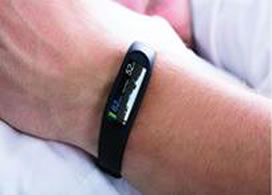
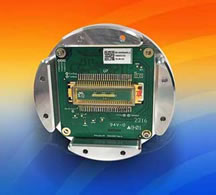
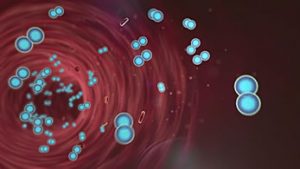
Summary of Unique Technologies & Capabilities
- First Non-Evasive Glucose sensor Monitoring Device
- Incorporates unique optical laser sensor for glucose reading
- Self-calibrating & Able to learn through operation
- No needle or micro-needles
- Utilizes patented AI technology for connectivity and pattern recognition
- Accuracy above 96%
- Alarms for high sugar levels & Key reminders and alarms to the patient/user
- Smartphone network connectivity
- Rechargeable
- AI built-in & now “patented” & Trademarked
- Logging and custom cloud capability & Cloud subscription service monthly $16.95
- Proprietary Short wave Infrared Optical Sensor
Other Relevant Spin-Off Capabilities
- Skin cancer detection (1 out 5 people have some form of skin cancer)
- Autonomous systems and cars
- Mobile IoT
- 5G communications wireless communications
- Illegal drug checking
- Other blood analysis—thickness/thinness, cholesterol, blood flow, oxygen others


